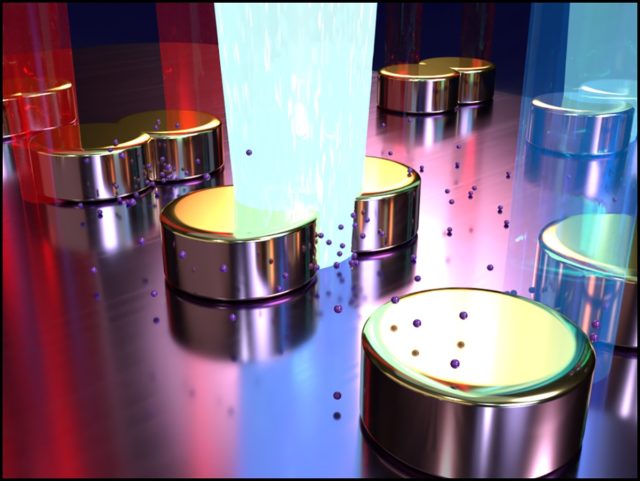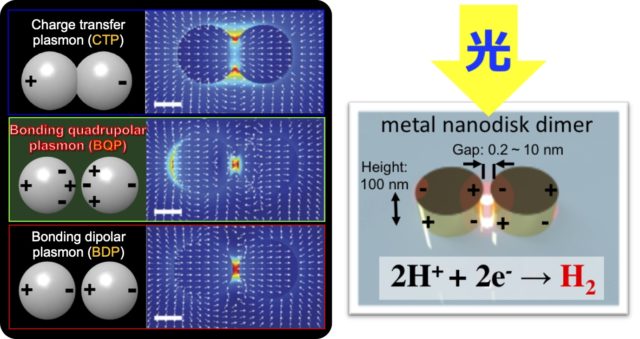Introduction of Research
Electrochemical fine-tuning of strong coupling state
When the dye molecules exist at the surface of the metal nanostructure and the energy of the dye excitions are close to that of plasmon, the new energy hybridized state generate which is called strong coupling generates due to the electronic interactions between the excition and plasmon. This new state provides the new photo response property beyond the limitation of the system. Recently, we have tried to electrochemically tune the coupling strength for the efficient use of the light energy.
Plasmonic single molecular trapping
With the excitation of the LSPR, the strong electromagnetic field with the sharp spatial gradient can be generated. Recently, several theoretical studies predict that the even small molecules could be trapped within this field. In our lab., we have attempted to establish the plasmonic molecular optical trapping method via electrochemical surface-enhanced Raman scattering measurements.
Establishment of the novel photo conversion system
The efficiency of the photo conversion for the semiconductor electrode is often limited to the narrow wavelength region due to its wide band gap energy. Recently, plasmonic photo-conversion system which is the combination of the plasmonic metal nanostructures with the wide band gap semiconductor, e.g. TiO2, have been receiving much attention. In our lab., we have introduced several techniques, such as the photo-induced oxidation polymerization or Raman measurements, to understand the detail about the charge transfer process in the system.
Introduction of laboratory
The efficient use of the light energy is one of the important issues toward energy utilization. It is known that metal nanoparticles can confine the light energy at the nanoscale region via the excitation of the localized surface plasmon resonance (LSPR). We are working on the unique light-matter interactions at the nanoscale interface based on the “Physical Chemistry” and “Electrochemistry”.




